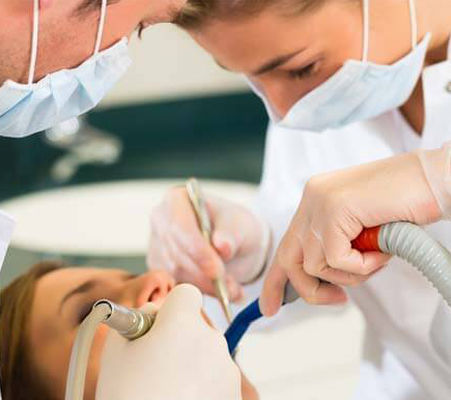Where Art meets Science
Periodontal surgery is a plastic (reshaping) surgical procedure designed to restore and regenerate normal form and function to lost and damaged periodontal structures which support the teeth (the gum tissue, periodontal ligament and bone).

What makes Periodontal Surgery work
An understanding of what periodontal surgery is designed to do, what makes it successful and what sustains the results over time is critical to successful treatment of periodontal disease. Periodontal surgery is not a cure, but rather an adjunct to making long-term treatment outcomes more favorable. Unlike surgery to take out an inflamed appendix, which removes the disease with it, the potential for the recurrence of periodontal disease still remains in susceptible individuals. The long-term goal of periodontal surgery is to increase the life expectancy of the teeth.
Over a lifetime, the treatment for periodontal disease is primarily aimed at controlling its cause, microbial dental plaque. The purpose of periodontal surgery therefore is to treat deformities and tissue loss created by the disease process. This is accomplished by eliminating “pockets” of diseased tissue; regenerating and reconstructing gum and periodontal tissue attachment to the teeth and generally to provide an environment more conducive to daily oral hygiene and professional maintenance care.

The Consequence of Periodontal Infection
The end results of periodontal disease include loss of the tight attachment of the gum and periodontal tissues to the teeth. Just as one can put a hand in a pocket, a space by the side of clothing, pockets can also form around the teeth, into which fine probing instruments can be inserted to measure the degree of vertical tissue detachment [see illustration above]. This detachment, results from chronic inflammation as described above. Breakdown ultimately causes bone and periodontal tissue destruction giving rise to different patterns and shapes of bony defects which surgical treatment aims to regenerate and repair. For the most part the detached gum tissues either recede or remain as a detached curtain around the teeth.
